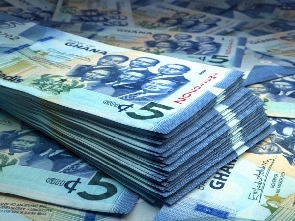Fitch Solutions projected a 43% depreciation of the cedi to the dollar in 2022. It also projected a 30.1 percent fall in the value of the cedi to the American currency in 2023, which means the woes of the local currency will not get better anytime soon. “We expect weakness for the Ghanaian cedi to persist throughout the near term, as we currently forecast the currency to depreciate by 43 percent and 30.1 percent against the US dollar in 2022 and 2023, respectively,” Fitch's report said. Read the full story originally published on August 28, 2022 by ghanaiantimes Fitch Solutions is forecasting a 43 per cent depreciation of the cedi to the US dollar in 2022. It is also projecting a 30.1 per cent fall in value of the cedi to the American currency in 2023, which means the woes of the local currency will not get better anytime soon. Disclosing this in its latest report on the country dubbed “Ghana’s Private Infrastructure Investment Set for Medium-Term Recovery”, it said, the continuing investor concern over the country’s large fiscal deficits puts downward pressure on the cedi. “We expect weakness for the Ghanaian cedi to persist throughout the near term, as we currently forecast the currency to depreciate by 43 per cent and 30.1 per cent against the US dollar in 2022 and 2023, respectively,” the report said. “We expect that Ghana’s inflation rate will remain high in the near term in the face of spiking global food and fuel prices and as continuing investor concern over the country’s large fiscal deficits puts downward pressure on the cedi,” it added. Again, it pointed out that the currency’s weakness would keep revenue risks elevated for foreign investors dependent on revenue streams in local currency. This is despite an expected $2 billion inflows from the Afrexim Bank and COCOBOD syndicated loan. Cedi depreciation to add upward pressures on prices of construction materials Furthermore, it said in light of the reliance of Ghana’s construction industry on imports, the cedi’s weakness would add to upward pressures on prices of construction materials from existing supply chain disruptions. This, in turn, it said would further contribute to increased project costs and potential investment delays in the near term. “In 2021, Ghana’s trade deficit for iron and steel products is estimated to have exceeded $1.2 billion, up from an estimated deficit of over $780 million worth of iron and steel products in 2020. In light of the Ghanaian construction industry’s reliance on materials imports, we expect that the cedi’s weakness will add to upward pressures on construction materials prices from existing supply chain disruptions. This, in turn, will further contribute to increased project costs and potential investment delays in the near term,” it said.
Business News of Friday, 21 October 2022
Source: www.ghanaweb.com

















